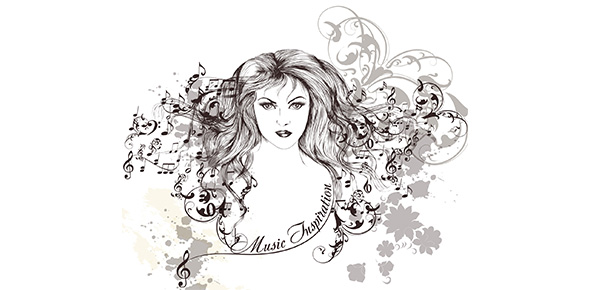Related Flashcards
Related Topics
Cards In This Set
| Front | Back |
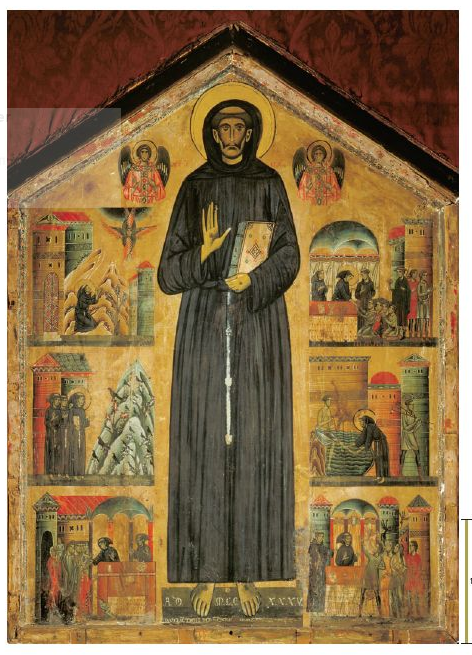 |
Tittle: Saint Francis Altarpiece.Century: 1235. 13th centuryArtist: Bonaventura BerlinghiereMovement/Culture: ByzantineLocation: San francesco, Pescia, ItalySignifficance: He displays the stigmata, which are marks resembling christ's wounds. His use of gold leaf, the angels and their lack of modeling reveal his byzantine roots. Also the figures are flat and spiritual.
|
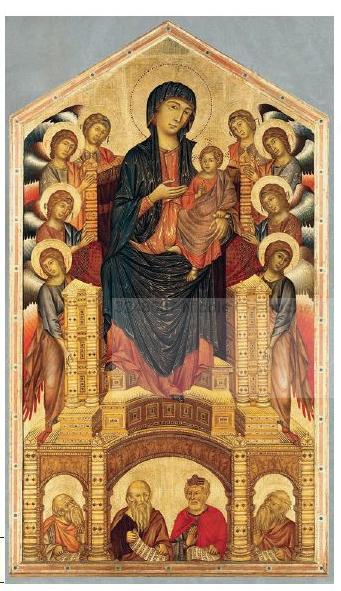 |
Tititle: Madonna Enthroned with Angels and Prophets. century: 1280-1290Artist: CimabueMovement:Location: Santa Trinita, Florence, Italy. He is moving away form the byzantine style. he uses model from byzantine style but he creates space by overlapping the angels and the virgin. the prophets at the bottom looking up and out reinforce the sense of depth.
|
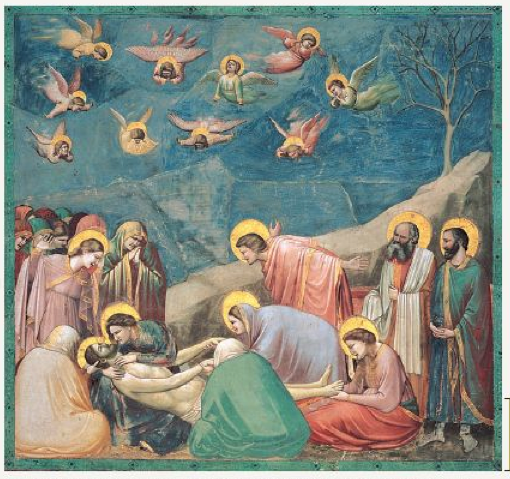 |
..Tittle: LamentationArtist:Gioto di BondoneCentury: 14th CenturyMovement: ?Location: Arena Chapell, Padua, Italy. Significance: this is where you start to see more life-like rendering. Theres is more emotion in the faces, and the angels are boldly foreshortened. this is also the first time backs of people have been painted and shown to the eye. his use of the the diagonal landscape directs eh viewer to the main scene which is the death of christ.
|
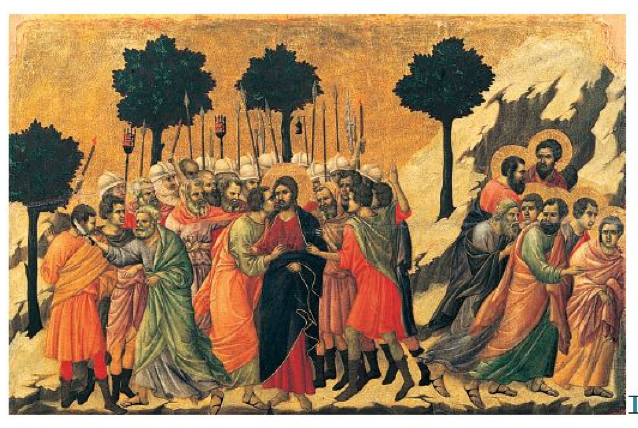 |
Tittle: betrayal of JesusArtist: DuccioCentury: 14th centurymovement/culture: sieneselocation: Siena Cathedral.the bodies are not that flat frontal shape anymore. Their drapery was more believable. The use of Landscape in a painting. First time where you start to see the depiction of human emotion.
|
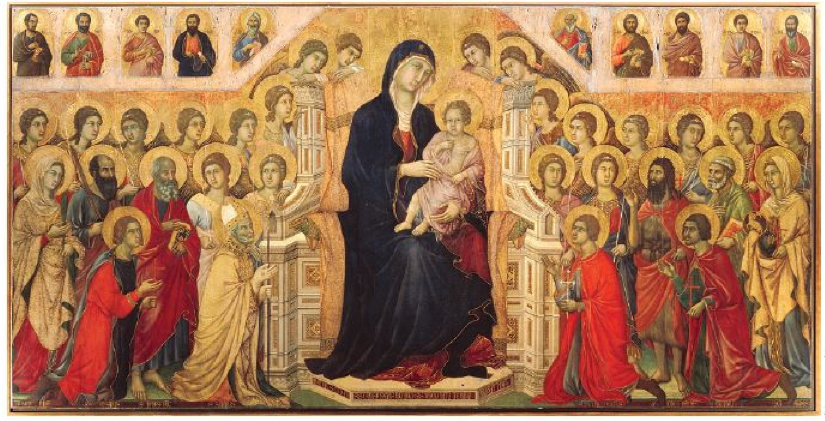 |
.Tittle: Virgin and child enthroned with saint. Artist: Duccio di Bunoniesegnacentury: 14th centurymovement/culture: Sienese location: Siena Cathedral, ItalySignificance: his used formality and symmetry from byzantine tradition but he relaxed the rigidity and frontality of the figures, he made them more human and gave each figure more individuality in their faces. also the drapery was more softened. Unlike Cimabue's his angels show more personality and even tho they are still overlapped they have their own space. |
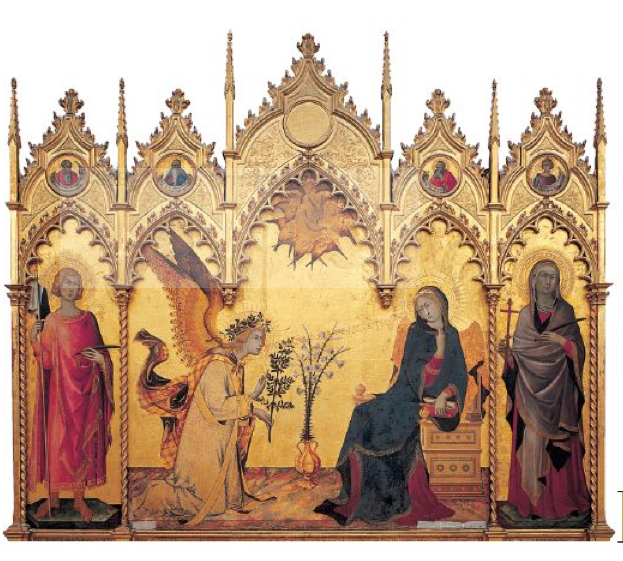 . |
Tittle: AnnunciationCentury: 14th Artist: Simone Martini and Lippo MemmiMovement: SieneseLocation: Siena Cathedral, Siena, ItalySignif: this shows elegant shapes and radiant color and spaceless setting. He shows the angel Gabriel as he has just alighted, his wings are still beating. his golden gown shows his celestial realm. The virgin is shown as an upper class woman, shes reading her book, like a nice young lady from that time would. and puts it down when gabriel arrives. theres a great interest in reality.
|
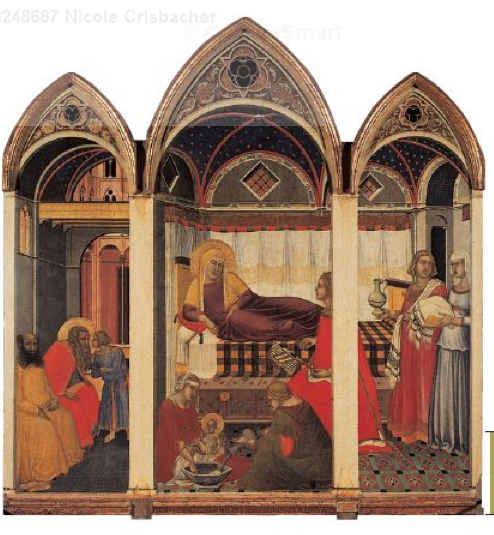 . |
Tittile: Birth of the Virgin.Century: 14th centuryartist: Pietro LorenzettiMovement: SieneseLocation: from altar of Saint Savinus, Siena Cathedral, Siena, Italy.Signig: He created architectural members that divided tha panel and made them look like they extend back into space. A good way to depict 3-dimensional space. It also shows a typical 14th century upper-class italian home.
|
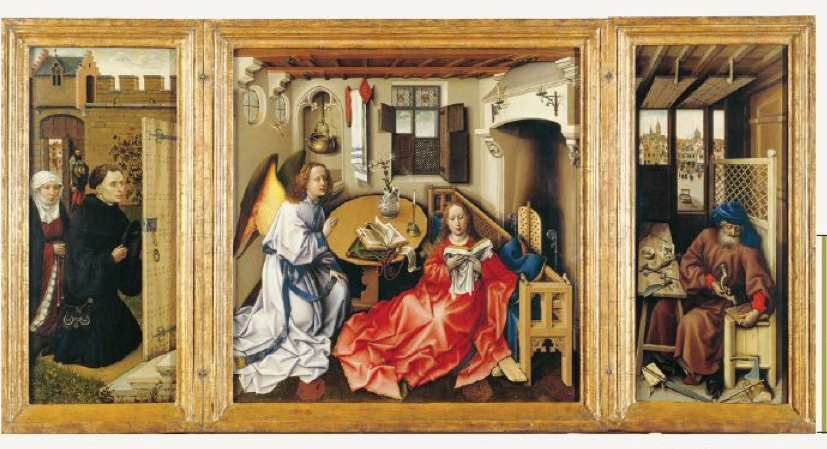 . |
Tittle: Mester of Flemalle, Merode Altarpice (open) Century: 15th Artist: Robert Campin.Movement: Beginning of protestant? Location: MET (cloisters) Signf: theres certain items in the room that symbolize the virgins purity, like the lilies, the book, the towels, the fire screen etc. in the right panel joseph is making a mousetrap, symbolizing christ as a bait to catch the devil. to the left panel are the donor and the donor's wife. the closed garden shows mary's purity.
|
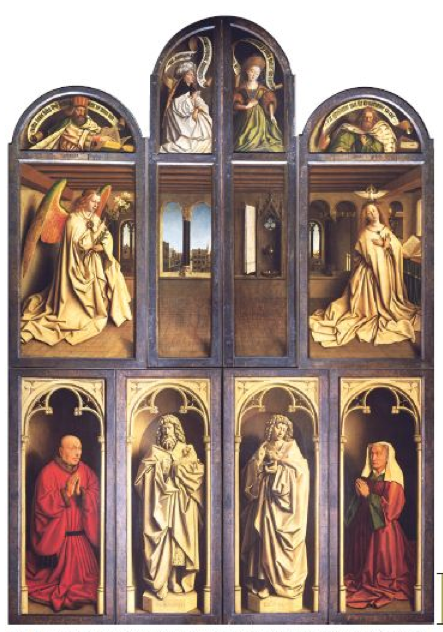 . |
Tittle: Ghent Altarpiece. (closed)century: 15th centuryArtist: Jan Van EyckMovement:Saint Bravo Catherdral, Ghent, Belgium.Signf: There is a lot of linear perspective and shading which emphasizes the frame more. the center register show a window with a view of a flemish town. Top reister shows Old Testament Profits: (L) Zachariah, (R) Micah (C) Sibyls. Center register shows angel gabriel and the virgin.the bottom register shows the Donor, statue John the baptist, statue of John the Evangelist, and the donor's wife. the donors gaze at them piously
|
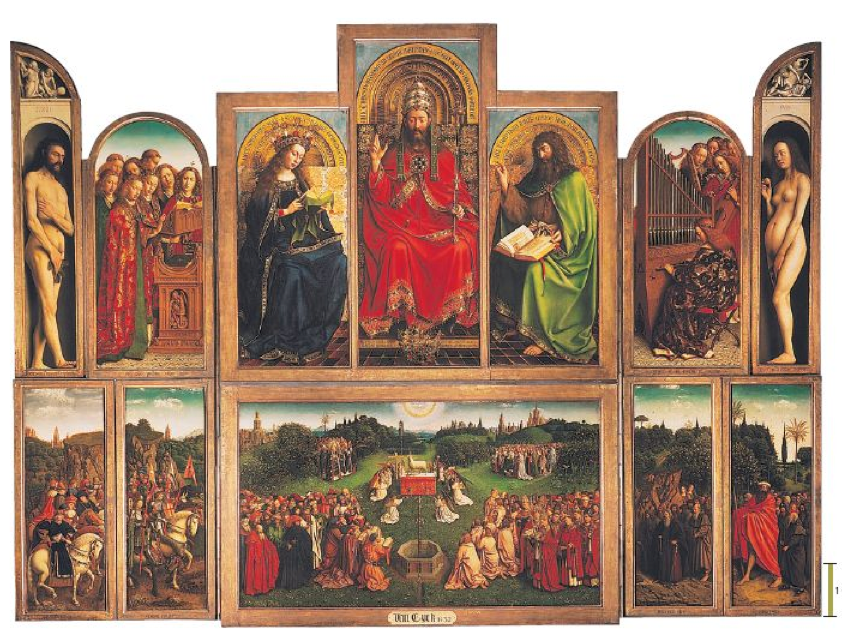 . |
Tittle: Ghent Altarpice (Open)Century: 15th centuryArtist: Jan Van EyckMovement:Location: Saint Bravo cathedral, Ghent, Belgium. Signf: This painting shows the Salvation from the original sin of Adam and Eve. The top register shows (R) Adamn, the a choir of angels, the Virgin Mary, God the Father, John the Baptist. a choir of angels and Eve. the bottom register show the Lamb of God in the middle overseen by the Holy Spirit, in which communities of saints come from every corner. This symbolizes the sacrifice of god's only son to safe humanity, and shows how big god's love is. (L) prophets (L)background holly confessors. (R) 12 apostles, Martyrs in red ropes. Saints and Popes. (R) background Virgin Martyrs.
|
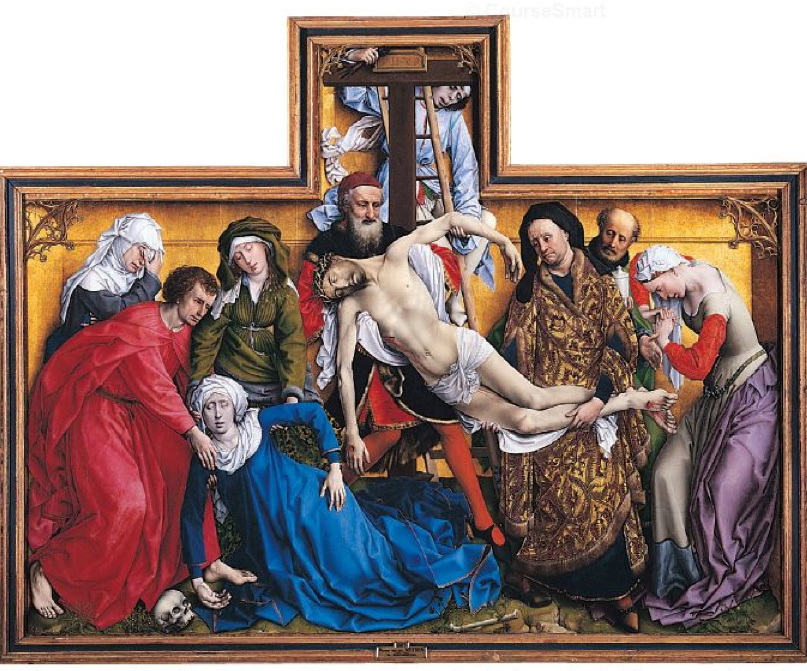 . |
Tittle: DepositionCentury: 15th Artist: Rogier Van Der WeydenMovement:Location: Notre-Dame hors-les-murs, Louvain, Belgium. Signfi: Instead of making a landscape Rogier put the figures in a compressed shallow stage. The similar poses of Christ and Mary unify the composition. Lateral movements gives the group a compositional unity. There is so much more emotion in the depiction of the faces. the corners of this painting in top resemble gothic architecture.
|
 . |
Tittle: Last SupperCentury: 15th centuryArtist: Dirk BoutsMovement: Location: Saint Peter's , Louvain, Belgium. Signf: Is one of the earliest Northern European paintings to demonstrate use of vanishing point to create perspective. He showed christ as a priest performing a ritual, the consecration of the Eucharistic wafer. It doesnt show the main focus of the supper which is Judas' betrayal, like other paintings. And he included 4 servants, which are most likely portraits of the commissioners. his is the last painted piece of the Last Supper
|
 .. |
Tittle: January, from Les Tres Riches Heures du Duc de
Berry.
Century: 15th century
1400s
Artist: Limbourg Brothers
(Pol, jean, Herman)
Movement: Early
renaissance
Locaton: France.
Signif: they
expanded the illusionistic capabilities of illumination. This depicts a new
year’s reception court.
The duke is the bottom
right in blue rope, the fire screen behind him almost looks like a halo. They
wanted him to look like a great man. In the top there is a representation of
the zodiac sign which varies depending on the month.
|
 .. |
Tittle: October from Les Tres Riches Heures du Duc de Berry.
Century:
1400s 15th century
Artist:
Limbourg Brothers (Pol, Jean, Herman)
Movement:
early renaissance.
Loction:
France
Signif:
The peasants working in the land are not depicted as sorrow and sad people.
This was just a way to flatter the duke as a compassionate master. The Louvre
is in the back which is where the king resides
|
 .. |
Tittle: Gates
of Paradise
Century:
1400s 15th century
Artist:
Ghiberti
Movement:
Early Renaissance
Location:
Florcne Italty
Signif:
each scenes is a relief that depicts a scene from the old testament.
|



